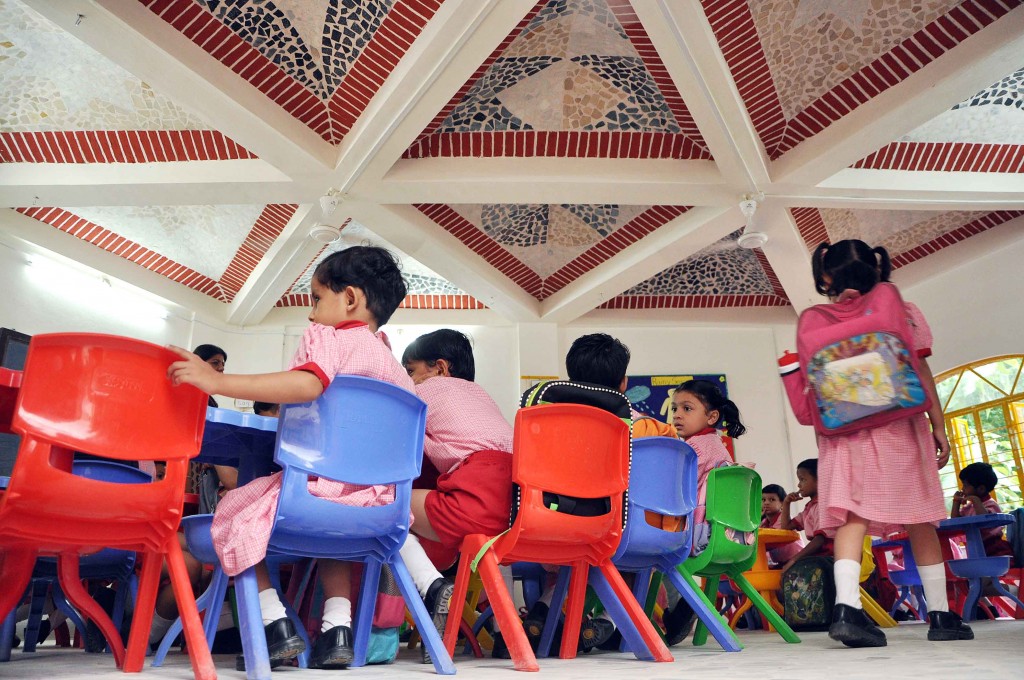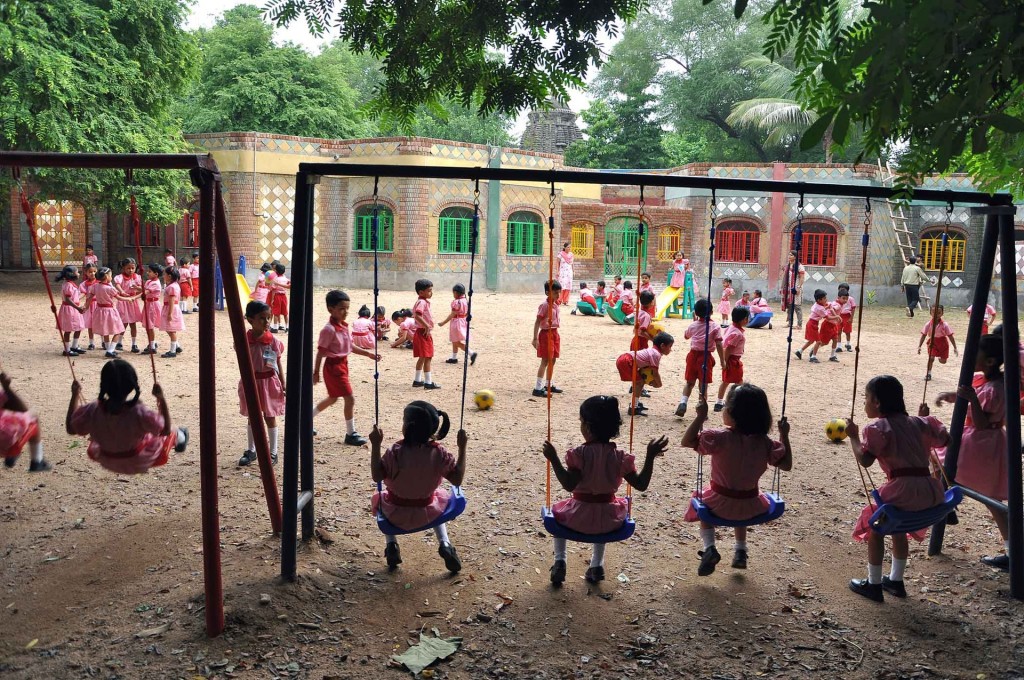The Hollow-core Interlocking Blocks used in the project for walling were made of Paper-mache and the space was so cool that they did not even need to put on their fans in the month of June when the school was inaugurated. The kids were so happy with the colourful homely environment and the ambience inside the school that no single tiny tot cried.
Architect Anil Laul of Anangpur Building Center
The design has won the first prize in the Green Building category, an award instituted by HUDCO. More details about the awards can be found HERE.
About the Project
Bright colour gate greets children and families as they enter the school grounds from the greens, making a bold and welcoming statement. Curved shaded seating within the landscape are features that fascinate. The reception area is a warm and inviting space that opens smaller and larger commons and the courtyard that floods the space with natural light. The central courtyard becomes a hub of activity at certain times of the day, where the little ones play and interact. Pupils gain great experience from meeting and listening to the teachers, and many visitors, developing social, language and behavioural skills.

The school is visually striking and makes a statement, with a simple palette of attractive recycled regional materials, detailed carefully to be durable and easily maintained, giving it an identity in its community.
Some more images






All images credits: Ar. Anil Laul – Anangpur Building Center







6 Responses
awesome!!!! wat an exciting place
i want to learn how to make these blocks and the roof… i want to attend their workshop
my friend has attended it and she learnt a lot
she is a big fan of master architect Anil Laul
where is this school loacted in baroda?
i love the funicular roofs……….made of waste
Where is this school located?
i wish to put my child in this school but it is far off from my home. she wud love the environment here
Can you please tell me where the school is exactly located in Baroda?